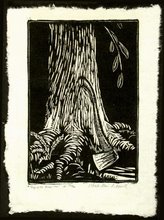 According to the Greek Orthodox church, today is Kathari Deftera (Clean Monday), the first day of lent. Schools and businesses are closed, and most Greeks will celebrate the holiday with their families, flying kites and eating special food. Traditionally, the food should contain no animal products, little oil, and nothing with blood. Fish with fins and scales is not allowed, but other, bloodless, types are okay. A Clean Monday table usually includes at least some of the following dishes:
According to the Greek Orthodox church, today is Kathari Deftera (Clean Monday), the first day of lent. Schools and businesses are closed, and most Greeks will celebrate the holiday with their families, flying kites and eating special food. Traditionally, the food should contain no animal products, little oil, and nothing with blood. Fish with fins and scales is not allowed, but other, bloodless, types are okay. A Clean Monday table usually includes at least some of the following dishes:1. lagana--a special, flatter, loaf of bread (not exactly unleavened)
2. taramosalata--fish roe salad (looks like pink mashed potatoes)
3. octopus
4. grilled shrimp
5. dolmathakia--grape leaves stuffed with rice and herbs
6. beans--either gigantes (giant) or mavromatika (black-eyed peas)
7. undressed lettuce salad
8. horta--boiled greens
9. olives (of course!)
10. halvah--a sweet, either homemade from semolina, or commercially made from sesame seed paste (has the texture of sand)
Some fast, huh? Seems more like a feast, and a healthful one at that. Real fasts, according to the Bible, mean no food is eaten at all. Also, the fasts in the Bible were not ritually set at specific times of the year. True believers abstained from food, either personally or collectively, when they needed to show God their earnestness in prayer. Prayer should always accompany fasting.
Here's what God thinks of religion's dietary traditions:
"And Jesus said, Are ye also yet without understanding? Do not ye yet understand, that whatsoever entereth in at the mouth goeth into the belly, and is cast out into the draught? But those things which proceed out of the mouth come forth from the heart; and they defile the man." -Matthew 15:16-18
The crux of the matter is the heart, not the belly.
Note: The food in the above photograph was prepared by my wonderful mother-in-law, Vaso. As well as being a terrific cook, she is a *born-again, Bible-believing Christian. She loves the Lord, and she made the food purely for our enjoyment, not because it has any religious significance. And we did enjoy it! Also enjoyed climbing the mountain behind her house, picking fresh oregano and rosemary.*Gospel of John, chapter 3 in the Bible.









No comments:
Post a Comment